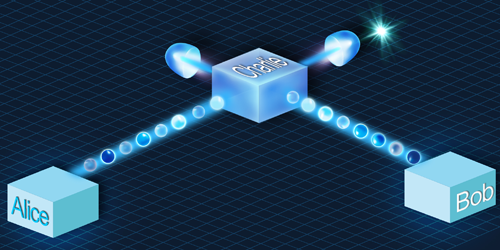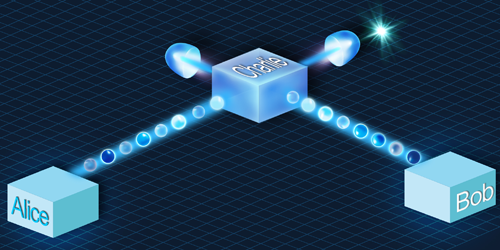Long-Haul Quantum Key Distribution
Governments and corporations are investing in quantum key distribution (QKD)—a theoretically invulnerable encryption technology—but several barriers still hamper its application. In particular, light attenuation in the optical fibers carrying the quantum signals limits the range over which QKD can work. Recently, researchers have demonstrated an alternative approach—“twin-field” QKD—that could potentially extend QKD’s range by hundreds of kilometers. Its practicality, however, remains questionable. Now, two independent collaborations, led by Jian-Wei Pan at the University of Science and Technology of China in Shanghai and by Hoi-Kwong Lo at the University of Toronto, have brought the method’s application a step closer by solving a key practical problem.
In the twin-field technique, two distant parties (“Alice” and “Bob”) encode qubits in single photons, which are made to interfere at the detectors of an intermediary (“Charlie”). Theory shows that the better performance, compared to standard QKD, stems from the rate at which transmission encryption keys can be exchanged: this rate scales more favorably with distance in the twin-field version. The scheme is difficult to implement, however, because quantum interference requires that the single photons generated by remote sources maintain their phase over large distances.
The teams demonstrate two ways of addressing this challenge. Pan’s team uses a stable cavity to lock the phase of Alice and Bob’s independent lasers. With such sources, they provide the first demonstration of twin-field QKD in a real optical fiber, reaching distances of up to 300 km. Lo and his experimental collaborators in Li Qian’s group at the University of Toronto use instead an interferometric configuration in which light travels both ways in an optical fiber loop, automatically compensating for phase fluctuations. Their scheme simplifies the twin-field QKD setup by removing the need for complex active circuitry for phase stabilization. Both experiments show that twin-field QKD breaks fundamental rate-distance limits that apply to standard QKD.
This research is published in Physical Review Letters.
–Matteo Rini
Matteo Rini is the Deputy Editor of Physics.





